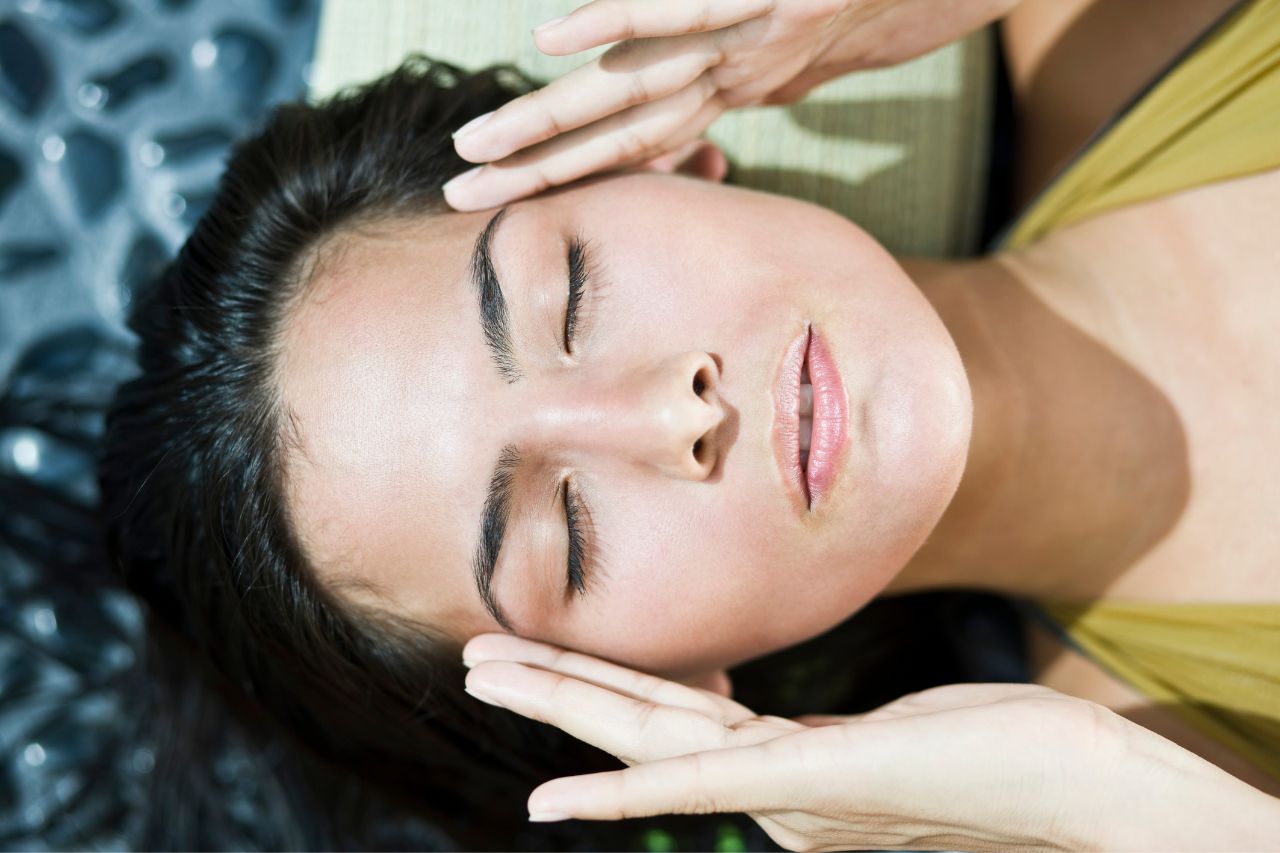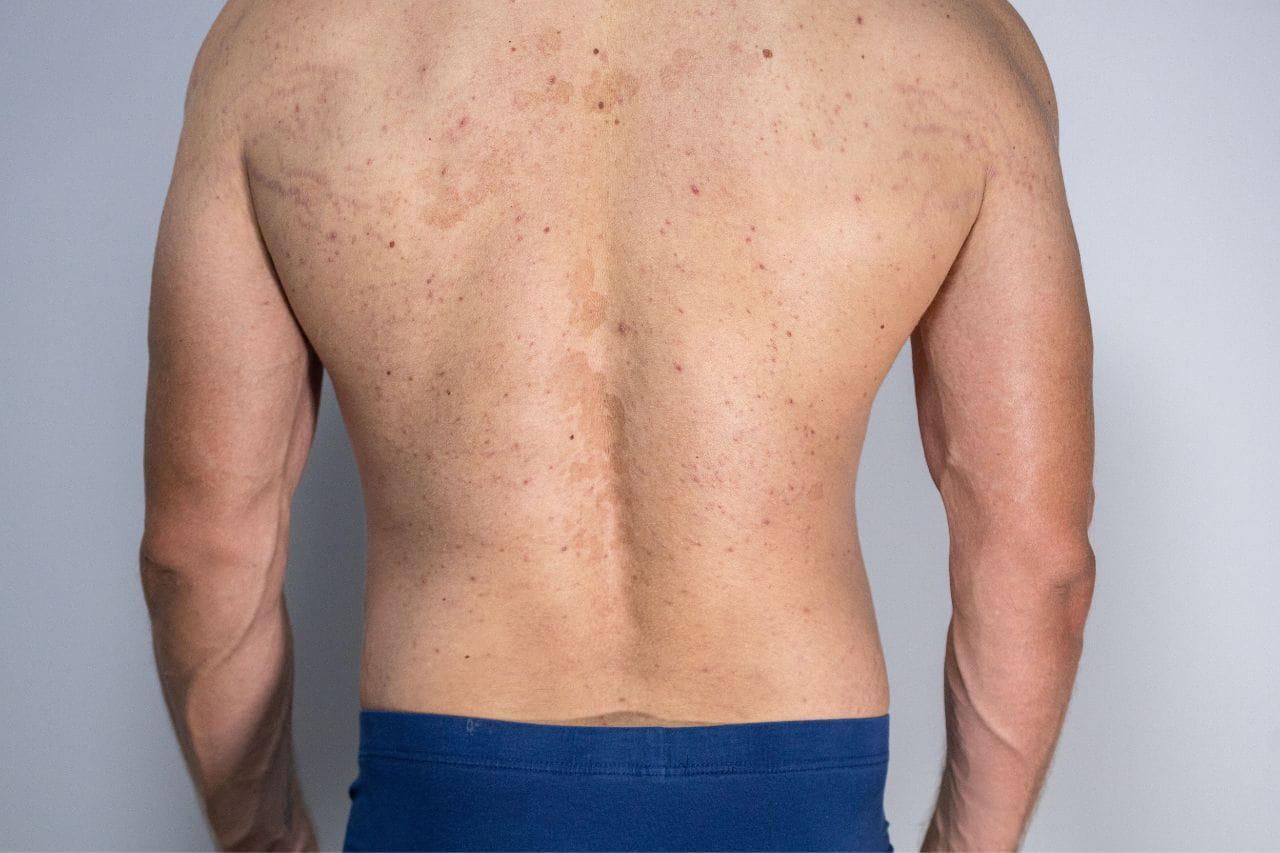Identifying Insect Bites
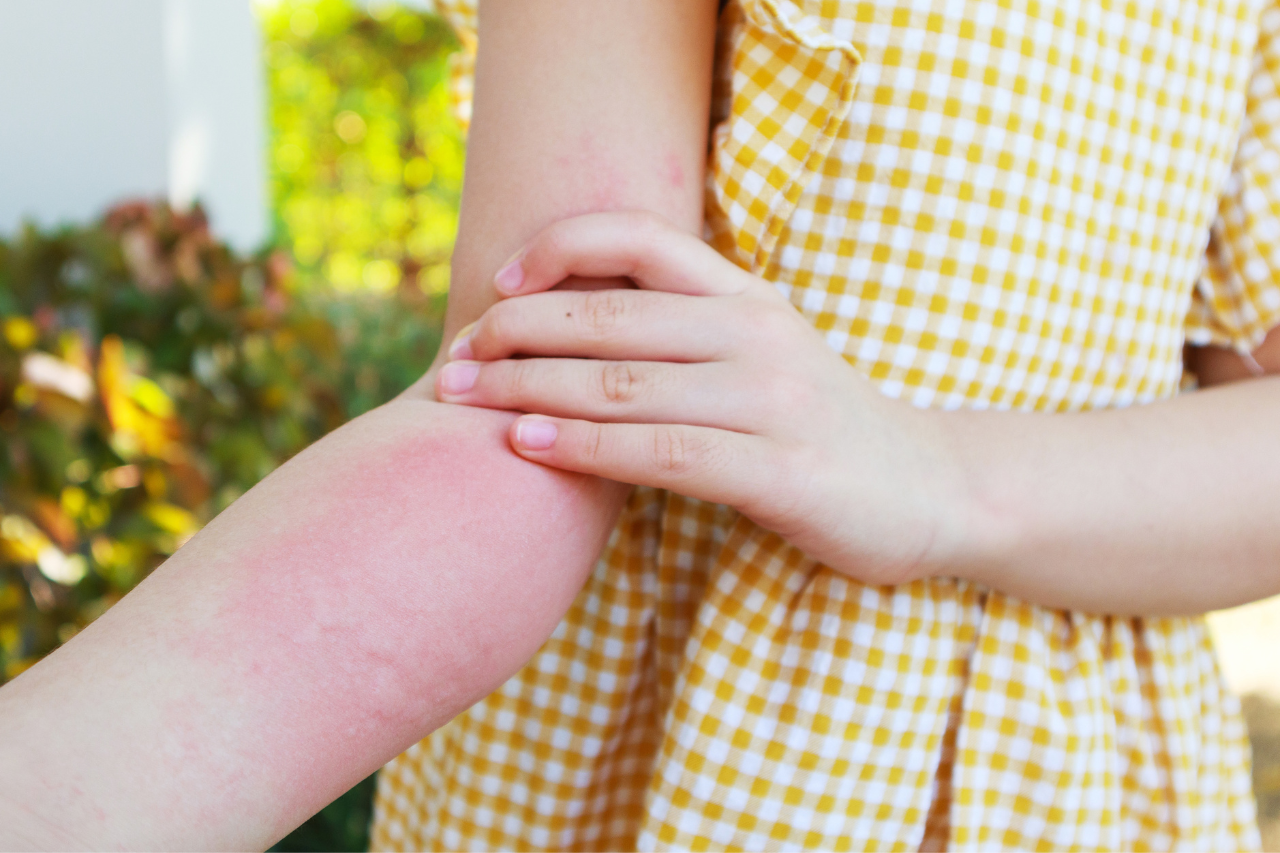
Insect bites can be painful initially and cause discomfort for an extended period. Knowing what bit or stung you helps you understand how to treat the resulting wound(s) and whether you need medical care. And in cases where you don’t have much discomfort, that knowledge can help you determine if you have a bug bite or a rash.
This article helps with identifying insect bites from pictures and descriptions. However, you should contact your doctor if you’re unsure what type of insect you’ve encountered and if the bite or sting is causing a significant reaction.
Note: If you develop symptoms of an allergic reaction called anaphylaxis — wheezing, fast heartbeat, lightheadedness, confusion, anxiety, or losing consciousness — you should get immediate medical attention.
Characteristics of Common Bug Bites and Stings
The wound from an insect is often due to venom the bug puts into your skin, causing an allergic reaction. Some of the more common bites and stings include the following:
Mosquito bites
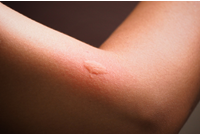
- Small, raised areas that develop quickly
- Become itchy, red, and hard
- Can occur multiple times in the same area
Bee stings
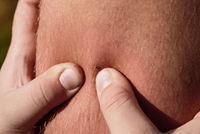
- White spot at the puncture site
- Redness, swelling, and pain or itching
- Only one sting from a bee as its stinger remains in the skin
Tick bites
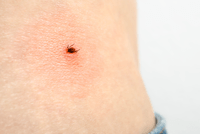
- Tick may remain embedded in the skin
- Pain and swelling at the bite site
- Can cause a burning sensation, rash, blisters, and trouble breathing
- Typically, a single bite
- Can transfer diseases like Lyme disease and others
Wasp stings
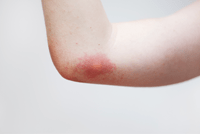
- Sharp pain
- Swelling, redness, and burning or itching at the site
- Raised welt develops
- Often multiple stings
Fire ant stings
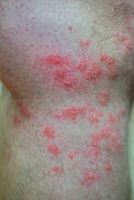
- Red, swollen spots that develop a blister
- Itching and burning can last a week
- Ants bite to hold the skin, then sting
Flea bites
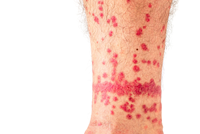
- Red, itchy bumps with a red halo
- Typically, in groups on feet and lower legs
- Skin response is immediate
Scabies
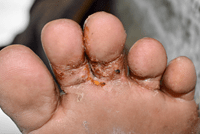
- Very itchy rash with blisters, pimples, or scaly skin
- Can cause raised skin-colored or white lines
- Symptoms can take 4 to 6 weeks to resolve
Bedbug bites
- Small rashes in a line or grouped with swollen, red areas, darker in the center
- Often on areas like hands, feet, and neck not covered by clothing
- May produce hives or itchy blisters or hives
Chigger bites
- From hives, welts, or blisters, typically in groups
- Very itchy
- Found in skin folds or where clothes fit tightly
- Often on legs, commonly just above the sock line, as chiggers jump from grass
Fly bites
- Pain and itching at bite sites
- Often grouped
- Typically, harmless but may cause insect-borne infections
Lice bites
- Itching at bite locations
- Different species attack the head, pubic area, and body
- Adults, nymphs (immature lice), and nits (eggs) may be visible
Yellow jacket stings
- Redness, swelling, itchiness, or tenderness at the sting site
- Aggressive breed of wasp
- Often sting multiple times
Black widow spider bite
Note: These bites are a medical emergency. Get assistance immediately.
- Red spot with white center
- Muscle pain and spasms in arms, legs, back, or abdomen
- Shaking, weakness, sweating, nausea, vomiting, chills, and headache
- Black spider with a red hourglass-shaped mark on its abdomen
Brown recluse spider bite
- Red spot with a white blister in the center
- Moderate to severe pain 2 to 8 hours after the bite
- Brown or tan spider with a violin-shaped patch
- Rare complications include fever, nausea, vomiting, kidney failure, and others
Hobo spider bites
- Red area with tender central nodule
- Minor pain, swelling, itching, burning, or stinging sensation at the site
- Can cause muscle twitches
- Light or dark brown spider
Wolf spider bites
- Itchy, tender red bump
- Heals in 7 to 10 days
- Large fuzzy, gray/brown spider
Horsefly bites
- Sharp pain as the bite occurs
- Redness, swelling, and itchiness at the site
- Fly’s blood-sucking may cause bruising
Deer fly bites
- Painful welts or bumps
- Can cause a rare bacterial disease called rabbit fever
- Flies have dark bands on their wings and green or gold eyes
Scorpion stings
Note: These stings are a medical emergency. Get assistance immediately.
- Sharp pain, numbness, tingling, and swelling occur at the sting site
- Rare symptoms like muscle twitching, trouble breathing, sweating, drooling, nausea, vomiting, increased heart rate, and excitability
- Severe symptoms more common in infants and children
Puss caterpillar stings
- Intense pain, itchiness, and irritation, at the sting site
- Headache
- Injury caused by venomous barb
Kissing bug stings
- Swelling, itching, and redness
- Often occur on the face, especially near the mouth
- Brown or black bugs with oval bodies and cone-shaped heads may transmit parasites
Diagnosing and Treating Bites and Stings
If you’re bitten or stung and need medical attention, try to collect the insect (without being bitten or stung again) since seeing it can help your primary care doctor with your diagnosis. This is particularly important with spiders since their venom can be very potent.
You can treat most bites and stings at home. This includes carefully removing all parts of the insect (stingers, etc.) from your skin and washing the affected area. Then you can apply ice to reduce the swelling and use topical itch creams, oral pain relievers, and antihistamines to treat the symptoms.
If you think you’re having a severe reaction to a bug bite or sting, call 911.
Avoiding Insect Bites and Stings
To minimize your risk of being bitten or stung, do the following:
- Cover your skin with clothing and a hat.
- Avoid wearing perfumes or scented lotions.
- Wear neutral colors and avoid floral patterns.
- Keeps foods and beverages covered.
- Use insect repellents or citronella candles to keep bugs away.
Avoiding contact with biting or stinging insects is the best way to prevent unpleasant symptoms and medical emergencies.


